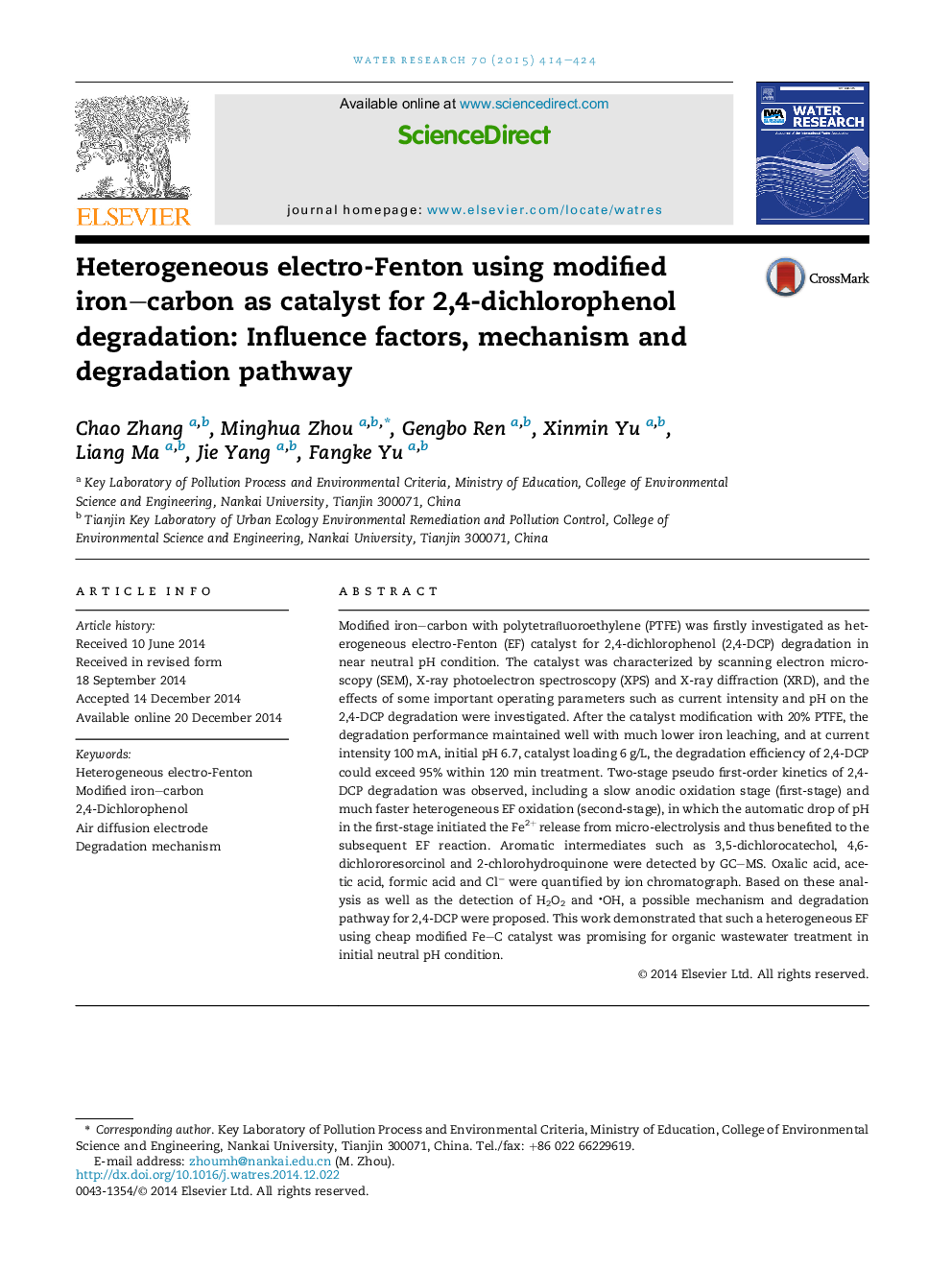| کد مقاله | کد نشریه | سال انتشار | مقاله انگلیسی | نسخه تمام متن |
|---|---|---|---|---|
| 4481325 | 1623098 | 2015 | 11 صفحه PDF | دانلود رایگان |
• PTFE modified Fe–C was first used as heterogeneous electro-Fenton catalyst.
• This heterogeneous electro-Fenton was effective for organics degradation in neutral condition.
• It demonstrated kinetically two stages for 2,4-DCP degradation and the second was much faster.
• A possible mechanism and degradation pathway for 2,4-DCP was proposed.
Modified iron–carbon with polytetrafluoroethylene (PTFE) was firstly investigated as heterogeneous electro-Fenton (EF) catalyst for 2,4-dichlorophenol (2,4-DCP) degradation in near neutral pH condition. The catalyst was characterized by scanning electron microscopy (SEM), X-ray photoelectron spectroscopy (XPS) and X-ray diffraction (XRD), and the effects of some important operating parameters such as current intensity and pH on the 2,4-DCP degradation were investigated. After the catalyst modification with 20% PTFE, the degradation performance maintained well with much lower iron leaching, and at current intensity 100 mA, initial pH 6.7, catalyst loading 6 g/L, the degradation efficiency of 2,4-DCP could exceed 95% within 120 min treatment. Two-stage pseudo first-order kinetics of 2,4-DCP degradation was observed, including a slow anodic oxidation stage (first-stage) and much faster heterogeneous EF oxidation (second-stage), in which the automatic drop of pH in the first-stage initiated the Fe2+ release from micro-electrolysis and thus benefited to the subsequent EF reaction. Aromatic intermediates such as 3,5-dichlorocatechol, 4,6-dichlororesorcinol and 2-chlorohydroquinone were detected by GC–MS. Oxalic acid, acetic acid, formic acid and Cl− were quantified by ion chromatograph. Based on these analysis as well as the detection of H2O2 and OH, a possible mechanism and degradation pathway for 2,4-DCP were proposed. This work demonstrated that such a heterogeneous EF using cheap modified Fe–C catalyst was promising for organic wastewater treatment in initial neutral pH condition.
Figure optionsDownload high-quality image (211 K)Download as PowerPoint slide
Journal: Water Research - Volume 70, 1 March 2015, Pages 414–424
